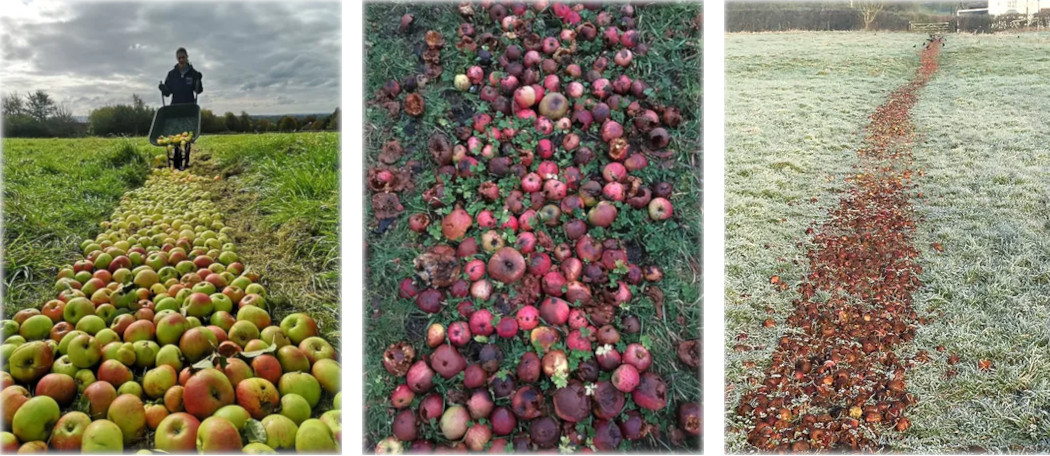In October 2019 I started making a piece of Land Art in the field beside my home. This was largely inspired by my interest in Land Art and working with nature but also from the desire to make an ephemeral artwork that represents the time my family has lived in this location over 20 years. Wanting to create another layer of history on the surface of the ground I positioned thousands of apples in a linear form.
There is a folklore story about the old farmer who used to live here, that he walked up the field every day to the pub and back again and the repetition of his footfall scored a path into the ground. It was the site of this path that I chose to place the apples from the neighbouring orchard at harvest time when the free material was readily available and only destined to rot on the ground.
After my initial control over the site and the positioning of the apples, I walked away leaving the material alone to compost and be reabsorbed into the ground. Nature and animals would sculpt, move and alter it. This process was recorded by photography, aerial, camouflage camera and still shots, randomly taken throughout the lifetime of the artwork. After 6 months the apples had returned to the ground and disappeared. The lasting effects will not be known for many years. Maybe a row of apple trees will grow and future owners will wonder why. Or a line of lush green grass will appear fortified by the intense nutrients from the displaced apples?

Apple Path, 2019. Drone photography: Jake Spooner.
Apple Path, 2019. Wraxall.
Clockwise from top left:
Construction of Apple Path, October 2019.
Composting process, 2020.
Apple Path, frosty morning, Winter 2020.
Apple Path, decomposing and discolouring, February 2020.
Night-time visitors, November 2019.
Night-time visitors, November 2019.
Apple Path, April 2020. Drone photography: Jake Spooner.
Apple Path was exhibited as part of In Real Life at Hauser & Wirth Somerset, July-August 2020.
www.julietduckworth.co.uk
This is part of FIELDS, a section of The Learned Pig devoted to exploring fields as natural and (agri)cultural, invisible and visible, poor and productive, created and creators. FIELDS is conceived and edited by Marloe Mens.







